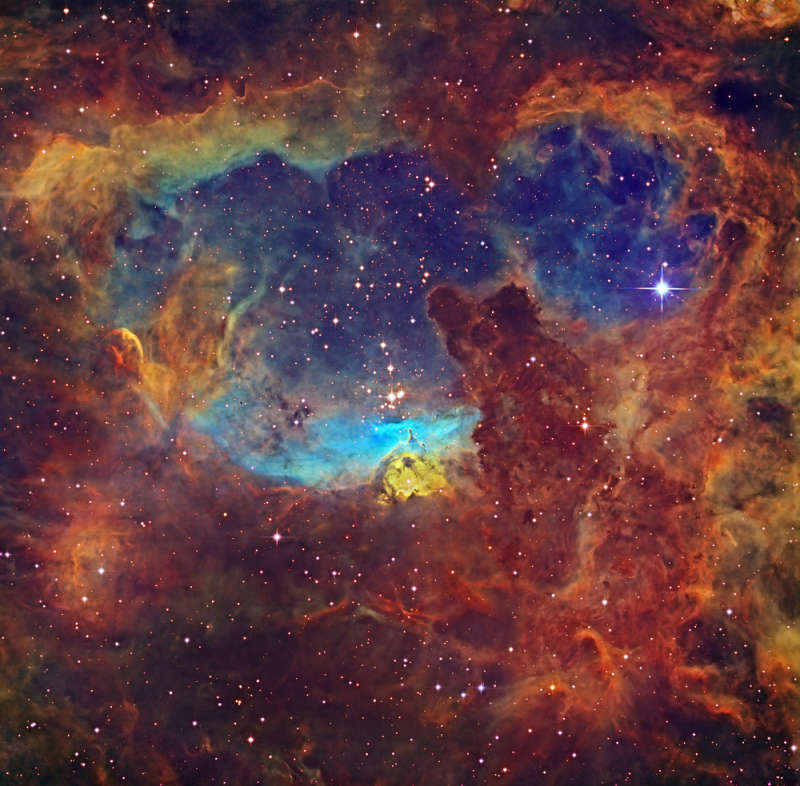Credit & Copyright: CHART32 Team,
Processing -
Johannes Schedler
Explanation:
Massive stars lie within
NGC 6357, an expansive emission nebula complex
some 6,500 light-years away toward the tail of the constellation
Scorpius.
In fact, positioned near center
in this
ground-based close-up of NGC 6357,
star cluster Pismis 24
includes some of the most massive stars known
in the galaxy, stars with nearly 100 times the mass of the Sun.
The nebula's bright central region also contains dusty pillars of
molecular gas, likely hiding massive protostars from the
prying eyes
of optical instruments.
Intricate shapes in the nebula are carved as interstellar winds
and energetic radiation from the young and newly forming
massive
stars clear out the natal gas and dust and power the nebular
glow.
Enhancing the nebula's cavernous appearance, narrowband image data
was included in this composite color image in a
Hubble palette scheme.
Emission from sulfur, hydrogen, and oxygen atoms is shown in red
green and blue hues.
The alluring telescopic view spans about 50 light-years at
the estimated distance of NGC 6357.
1999 2000 2001 2002 2003 2004 2005 2006 2007 2008 2009 2010 2011 2012 2013 2014 2015 2016 2017 2018 2019 2020 2021 2022 2023 2024 2025 |
Yanvar' Fevral' Mart Aprel' Mai Iyun' Iyul' Avgust Sentyabr' Oktyabr' Noyabr' Dekabr' |
NASA Web Site Statements, Warnings, and Disclaimers
NASA Official: Jay Norris. Specific rights apply.
A service of: LHEA at NASA / GSFC
& Michigan Tech. U.
|
Publikacii s klyuchevymi slovami:
star formation - emission nebula - zvezdoobrazovanie - emissionnaya tumannost'
Publikacii so slovami: star formation - emission nebula - zvezdoobrazovanie - emissionnaya tumannost' | |
Sm. takzhe:
Vse publikacii na tu zhe temu >> | |
